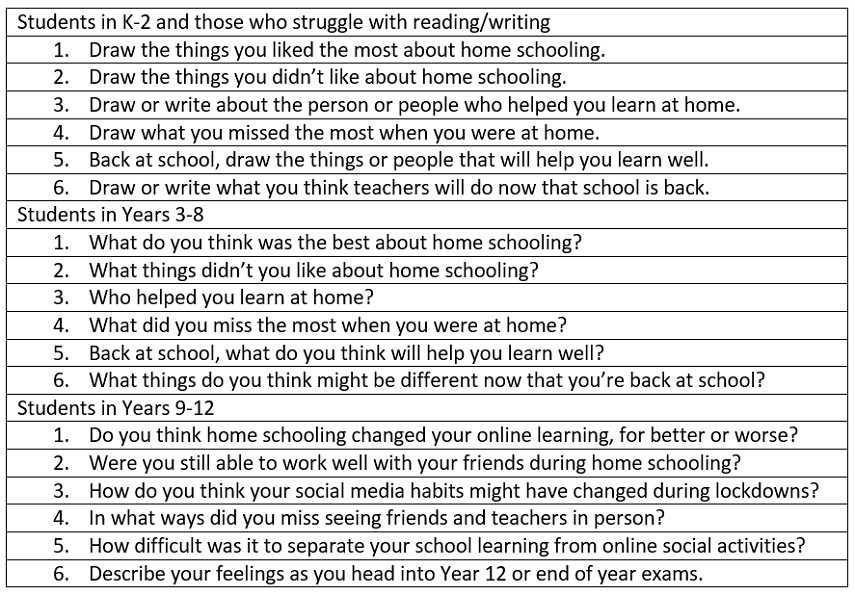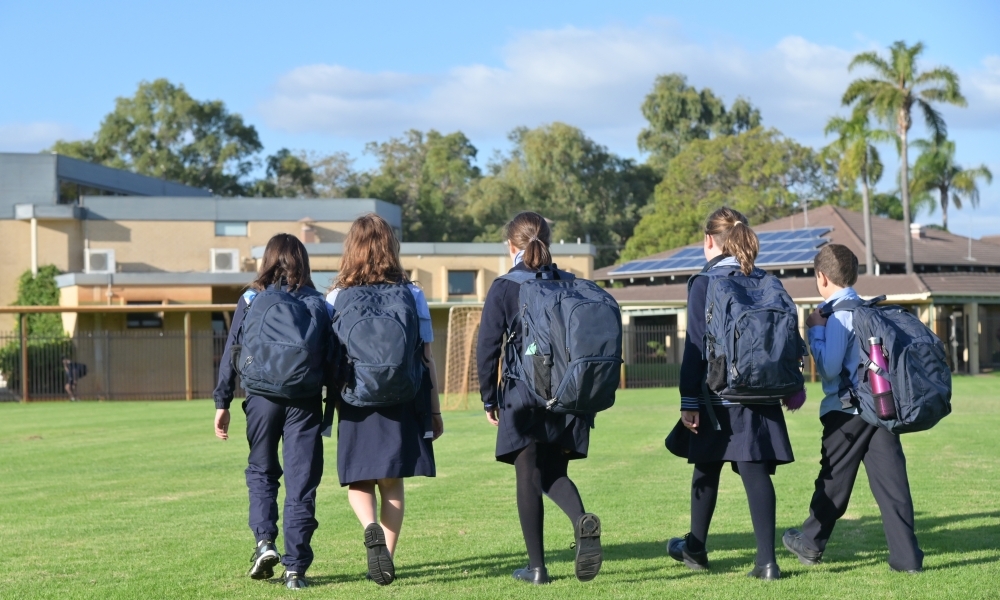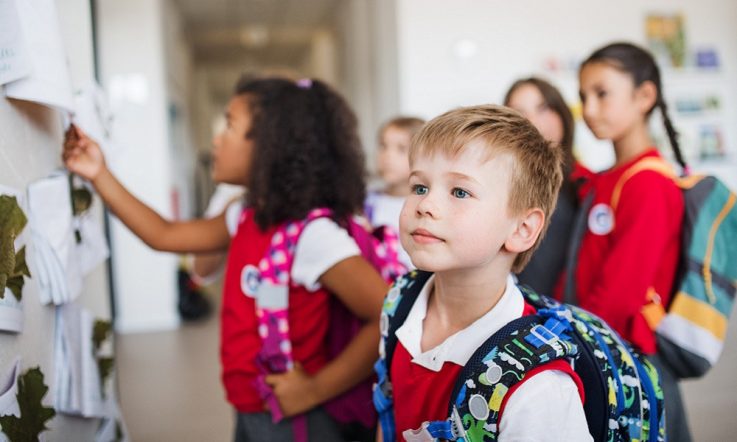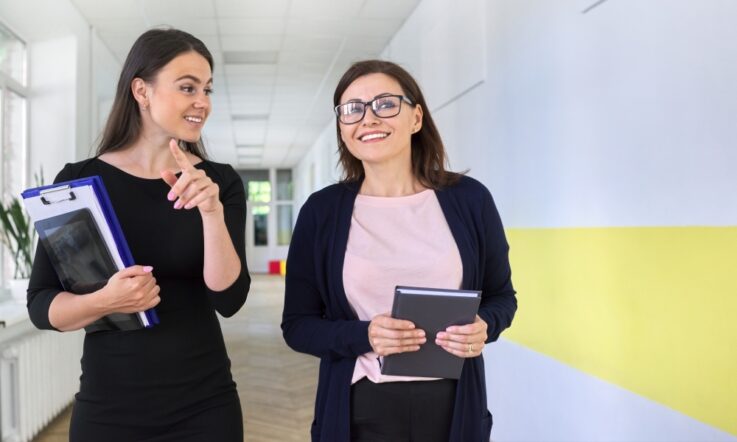As COVID-19 vaccination rates increase and schools here in Australia and around the world return to on-site learning, teachers and students will need to reestablish face-to-face relationships and routines, take time to reflect on their home learning experiences and think about where to from here. Dr Gail Brown and Dr Carl Leonard offer some advice and questions for reflection in today’s reader submission.
Many students have been out of school, learning remotely for long periods of time now – some without resources to support their learning. As schools return to face-to-face teaching, we all need to consider how to scaffold and support this cohort going forward for as many young people as possible.
School leaders, teachers, parents and communities can all support this process in different ways.
Conversations an important foundation
Relationships need to be reestablished and supportive of all, in this new era of face-to-face teaching. Conversations between students and teachers, as well as parents, are an important foundation moving forward. These conversations need active listening to the voices of students, so they can be reassured that their return to school will be successful. School leaders and teachers need to be tolerant of differences in levels of anxiety and the different abilities of both teachers and students as they return to possibly new and different routines of school life after long periods at home.
Some students may take longer to reacclimatize themselves to the class situations, to lesson and timetable routines that were used prior to lockdowns. More than ever, students need to be reminded of their strengths, what they do well and positive school and classroom cultures that celebrate difference.
The first thing to remember is that this return to school is both similar and different to the start to year: Similar in that students have been away from school for a long period of time, some learning online and some not; different in that students may have the same (not a new) teacher and are in the same classroom with the same peers who they haven’t been able to see.
Questions to scaffold student reflections
Given this context, teachers can gently ask students to reflect on their time during home learning and how this is better and/or worse than being in the classroom. A set of short, simple questions can scaffold this for all students, included below with some suggestions for adjustments.

As Daniel Willingham says: ‘Children are more alike than different in terms of how they think and learn,’ (Willingham, 2020, p. 167). In the context of how students respond and this quote, teachers can consider what one or two students draw or write, and possibly infer other students may also be thinking and feeling this way, but just unable or unwilling to communicate this.
There have been many positives that have come from the pandemic, and it’s important for educators and their students to reflect on these: more time with family, less travelling time, more physical exercise and more free time. Teachers and their students have, overnight, become more skilled in using technology to support learning and this should be maintained – especially where, for some health reasons, some students might not return to school as soon as classmates.
Support from school leaders
In the context of return to school, both teachers’ and students’ wellbeing needs to be considered, and supported by school leaders. Scaffolding might include some simple conversations, checking in with both colleagues, like other classroom teachers as well as school leadership teams – likely 1:1, informally, over a coffee or a classroom visit, during or outside of time with students. Some school leaders may consider using some formal or informal measures of staff wellbeing as part of their return to school process.
Reconnecting with parents and caregivers
Connecting with parents and caregivers has likely been more frequent during homeschooling. School leaders and teachers need to consider how this might be maintained or even shape and potentially build stronger connections as school returns. Like all of us, parents and caregivers have been impacted in different ways, some under more significant pressure than others. Again, communication and conversations will be key to moving forward in a positive way, into the new form of education that arises out of the pandemic melee. Included below are some useful links to supporting websites and resources that may be useful for this scaffolding.
References and related resources
New South Wales Department of Education. (2021). School Infrastructure. COVID-19 Advice for families. New South Wales Government. https://www.schoolinfrastructure.nsw.gov.au/news/2021/07/schools-return-under-covid-19-settings.html
New South Wales Department of Education. (2021, September 9). Helpful tips for secondary students returning to school. New South Wales Government https://education.nsw.gov.au https://education.nsw.gov.au/covid-19/wellbeing-for-students-and-families/helpful-tips-for-secondary-students-returning-to-school
Reich, J., & Mehta, J. (2021). Healing, Community, and Humanity: How Students and Teachers Want to Reinvent Schools Post-COVID. https://doi.org/10.35542/osf.io/nd52b
Relationships Australia Victoria. (2020). Coronavirus (COVID-19): Supporting Children to Return to School. Tip Sheet (June 2020). Accessed October 2021 from http://www.relationshipsvictoria.org.au https://www.relationshipsvictoria.org.au/media/mivel0sc/covid19-returning-to-school-tips-20086.pdf (PDF, 936KB).
Willingham, D.T. (2020). Why students don’t like school? A cognitive scientist answers questions about how the mind works and what it means for the classroom (Second Edition). Jossey-Bass, Wiley.
What opportunities are you providing for your own students to reflect on the home learning experience and return to school? Do they have any questions about the return to face-to-face teaching and learning?
As a teacher and school leader, what were some of the positives to come out of the remote learning period? How can you build on these positives going forward?
As a school leader, what provisions will you put in place to support staff wellbeing as part of the return to school?



